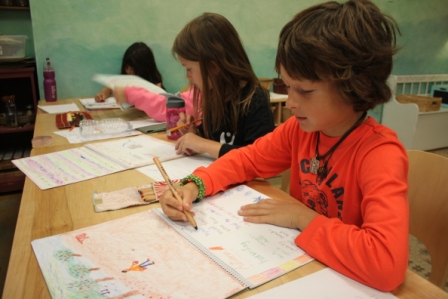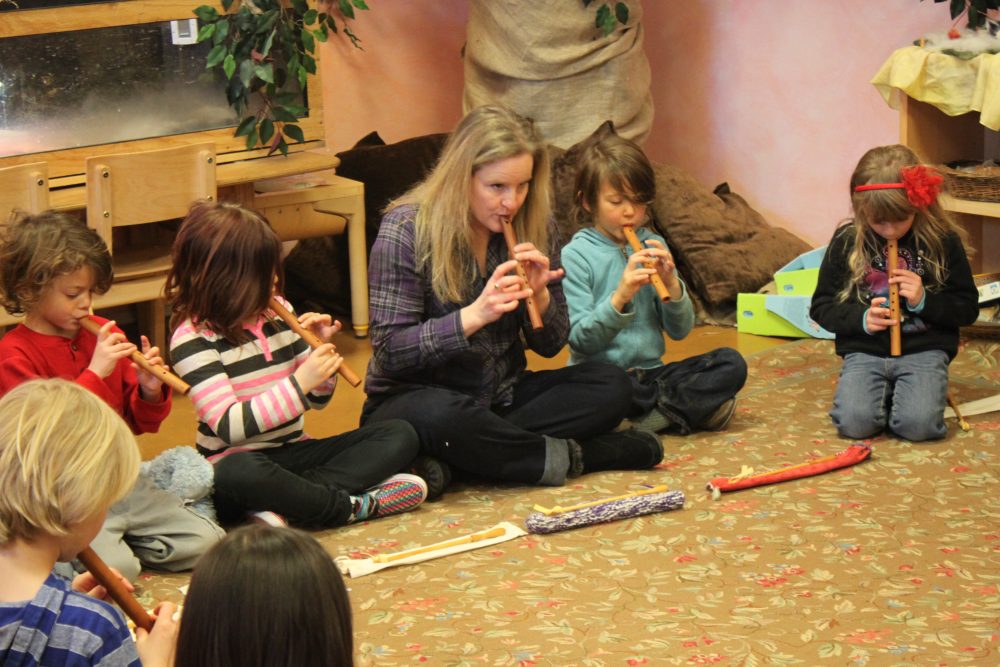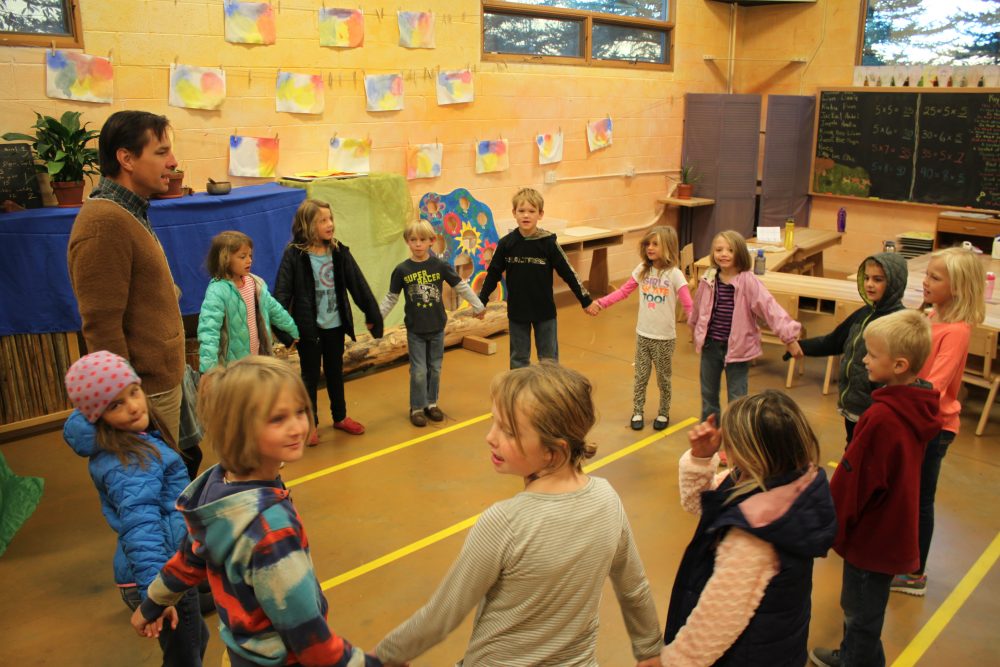Children entering second grade still carry with them much of the imaginative consciousness of early childhood, and they are beginning to be more aware of themselves and others.
In 2nd grade, we emphasize:
Fables and the development of human qualities: Many traditional fables show the sharp contrast between positive and negative qualities such as honesty and deceit, trust and betrayal, kindness and cruelty. The children see that they, like the characters in the fables, have desires, likes, dislikes, positive, and negative qualities. They begin to see that there are choices to be made in life. They are introduced to many noble characters so that they have an example of the highest human qualities of compassion, generosity, and loving kindness for examples, to strive towards.
Writing skills: During the second grade much attention is given to the development of writing skills. The children continue reading what they themselves write in their main lesson books by retelling the fables they have heard.
Imagination and pictorial thinking: Cognitively, second graders continue to be at home in an environment where content is presented in a richly pictorial way. Concepts are best understood when they are mobile and organic in quality.
Feelings and emotions: Second graders learn to cultivate a sense of breadth and richness of the language of the feelings and emotions.
Continuation of fundamental academic skills: Second graders continue to familiarize themselves with the fundamentals of arithmetic and literacy, further developing the skills that were introduced in first grade.
Movement: Teachers continue to use movement, rhythm and rhyme as a key instructional tool.
The 2nd grade curriculum includes:
Math: Continue with four operations of arithmetic; story problems; number patterns; times tables 7 through 12, long division, written calculations
Literature & Grammar: Reading and writing; phonetics; elements of grammar (naming, describing words); beginning cursive writing; Animal fables, American Indian myths and legends of heroic people from around the world
Science: Garden and nature studies; school and local environment, seasons; animals
Music and Performing Arts: Singing; pentatonic flute/recorder; in-class drama and performance
Art: Continue form drawing; watercolor painting; beeswax scene modeling, block crayon drawings
World Language: Spanish continued (vocabulary, counting, animals, colors)
Handwork: Knitting patterns of knit and purl (pattern recognition and perpetuation, concentration, fine motor skill development); crocheting
History & Social Studies: Legends and stories of heroic people and animal fables
Geography: Natural studies
Physical Education: Rhythmic games, line games



